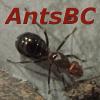- Formiculture.com
- Forums
- Gallery
- Members
- Member Map
- Chat

St. Louis, MO, 4/29/19
Started By
LIFEsize
, Apr 29 2019 3:23 PM
7 replies to this topic
#1
 Offline
-
Posted April 29 2019 - 3:23 PM
Offline
-
Posted April 29 2019 - 3:23 PM
Please help me id this ant. It is as small as a tetramorium worker, and I found it in my pool. It’s been trying to remove it’s wings as well.
https://imgur.com/gallery/CwEcrmn
https://imgur.com/gallery/CwEcrmn
#2
 Offline
-
Posted April 29 2019 - 3:58 PM
Offline
-
Posted April 29 2019 - 3:58 PM
Sorry, but that's not a queen at all, it's actually a male ant in the genus Nylanderia. I actually made that mistake a few days ago. Good luck in finding a queen though!
- AntsBC likes this
Currently Keeping:
Camponotus chromaiodes, Camponotus nearcticus, Stigmatomma pallipes, Strumigenys brevisetosa, Strumigenys clypeata, Strumigenys louisianae, Strumigenys membranifera, Strumigenys reflexa, Strumigenys rostrata
#3
 Offline
-
Posted April 29 2019 - 4:34 PM
Offline
-
Posted April 29 2019 - 4:34 PM
I recently had a brachymyrmex nuptial flight, positive it couldn’t be a male from that kind? I noticed some people confusing nylan with brachy.
#4
 Offline
-
Posted April 29 2019 - 4:38 PM
Offline
-
Posted April 29 2019 - 4:38 PM
Na man, it's either Nylanderia faisonensis or Nylanderia parvula. A photo of the male's 9th sternite would be all I need to give you the exact species.
http://www.antwiki.o...ylanderia_Males
#6
 Offline
-
Posted April 30 2019 - 10:52 AM
Offline
-
Posted April 30 2019 - 10:52 AM
Please try to embed your photos. 
- AntsBC likes this
My Main Journal | My Neivamyrmex Journal | My Ant Adoption | My YouTube
Join the TennesseeAnts Discord Server! https://discord.gg/JbKwPgs
#7
 Offline
-
Posted April 30 2019 - 10:55 AM
Offline
-
Posted April 30 2019 - 10:55 AM
The queen is Nylanderia faisonensis.
- TennesseeAnts likes this
#8
 Offline
-
Posted April 30 2019 - 10:58 AM
Offline
-
Posted April 30 2019 - 10:58 AM
I am never able to identify Nylanderia to the species level! How do you do it? Are they any good to keep? I never tried.
Edited by Ant_Dude2908, April 30 2019 - 10:59 AM.
My Main Journal | My Neivamyrmex Journal | My Ant Adoption | My YouTube
Join the TennesseeAnts Discord Server! https://discord.gg/JbKwPgs
1 user(s) are reading this topic
0 members, 1 guests, 0 anonymous users















